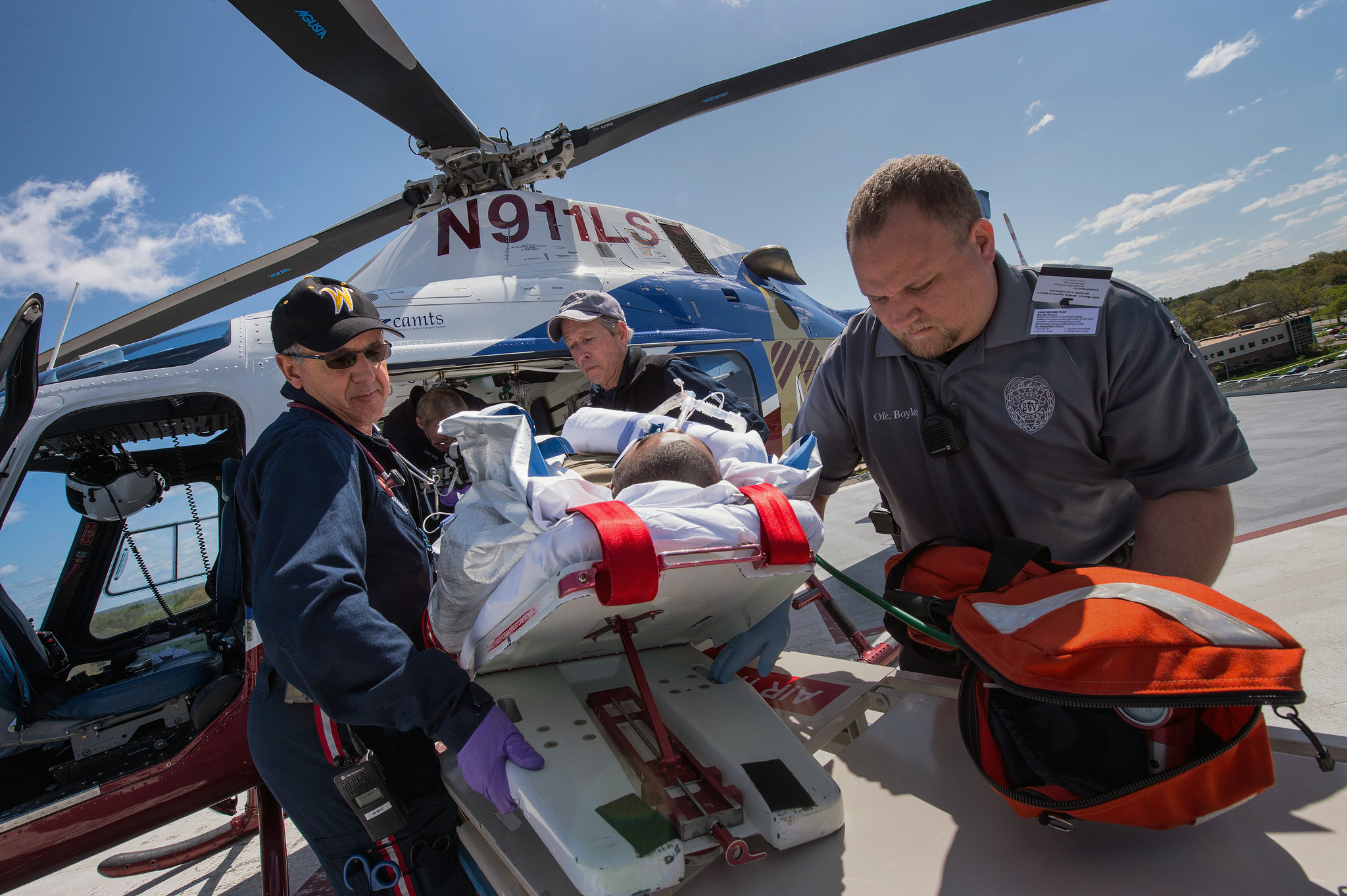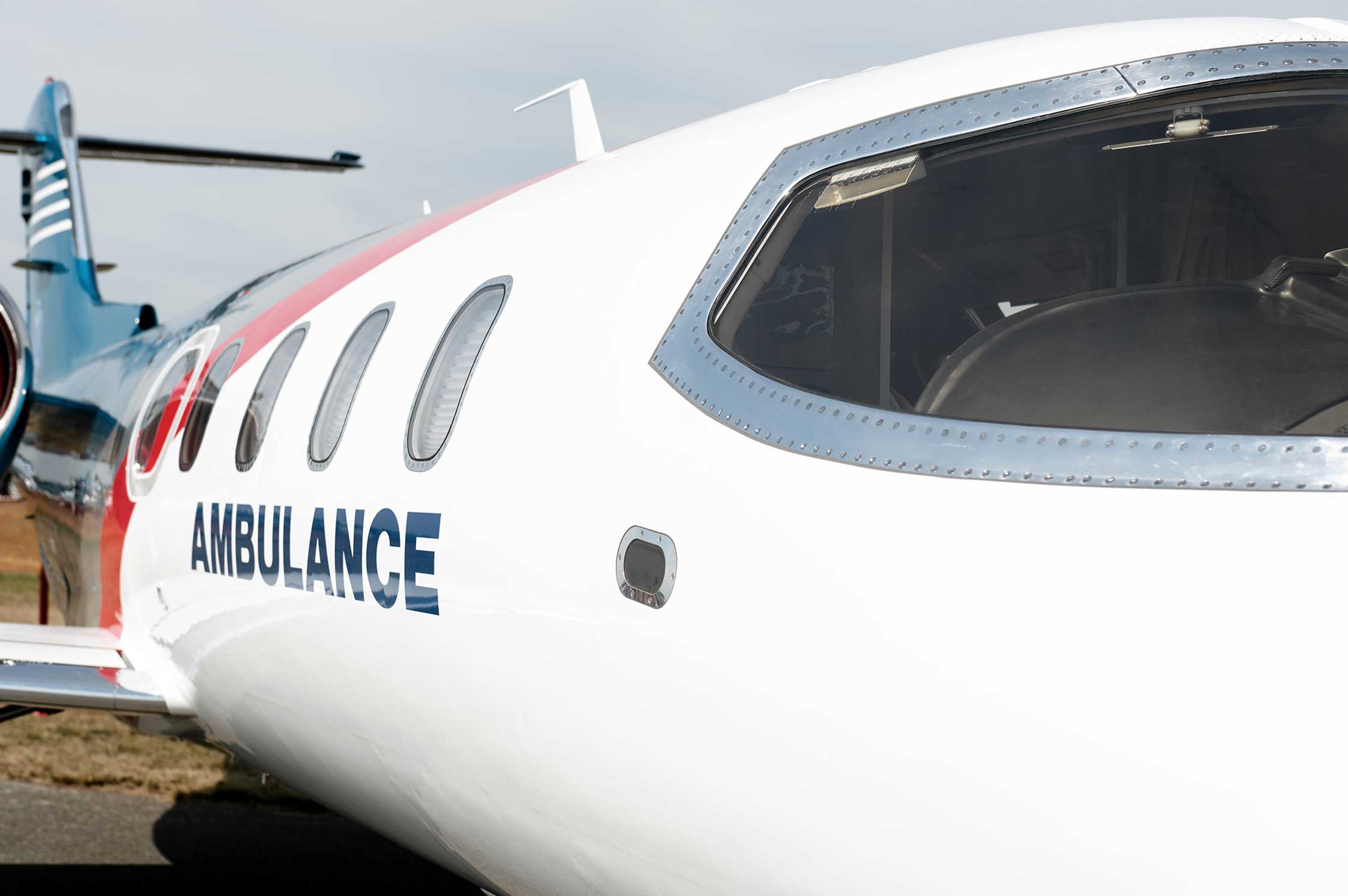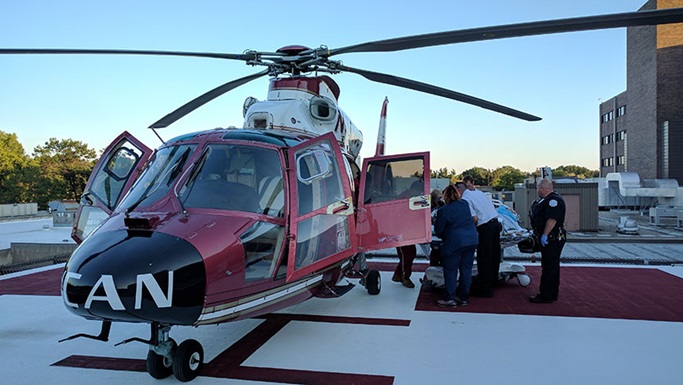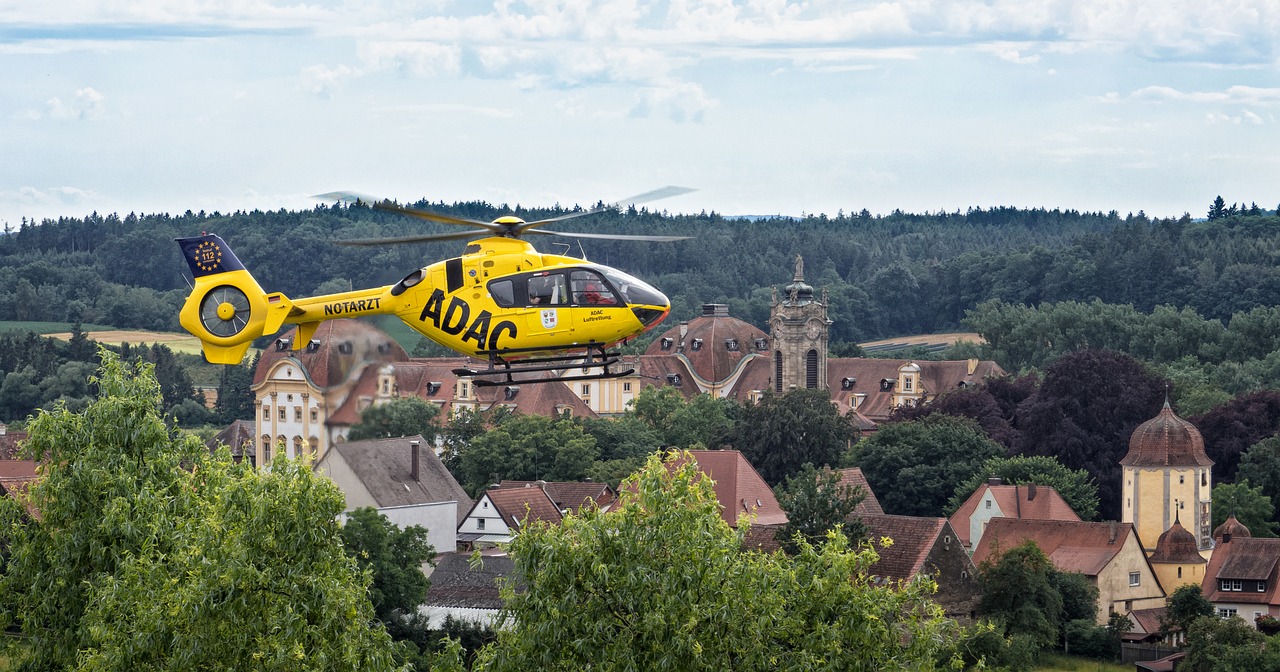So, you’ve found yourself in a foreign country, dealing with a medical emergency, and now you’re wondering how on earth you’re going to get home for the proper care you need. Well, my friend, that’s where air ambulances for international medical repatriation come in. These specialized aircraft are equipped with medical equipment and staffed by highly trained professionals who can transport patients safely and efficiently from one country to another. Whether it’s a complex surgery, a critical illness, or a simple case of needing medical assistance while traveling, air ambulances are there to ensure you get the care you need, no matter where you are in the world. So, let’s dive into this fascinating topic and explore the world of air ambulances for international medical repatriation.

1. Understanding International Medical Repatriation
1.1 What is International Medical Repatriation?
So, you may be wondering, what exactly is international medical repatriation? Well, it’s the process of safely transporting individuals who are injured or ill back to their home country for medical care. This can be necessary when someone becomes sick or injured while abroad and requires specialized treatment or when they desire to be closer to their loved ones during a difficult time.
1.2 When is International Medical Repatriation Needed?
International medical repatriation is needed in various situations. For example, let’s say you’ve been traveling overseas and suddenly suffer a severe medical condition. In such cases, you may require specialized medical attention that may not be readily available in the country you’re visiting. Repatriation allows you to be transferred to a medical facility in your home country, where you have access to familiar healthcare services and support systems.
Another scenario where international medical repatriation may be necessary is when you encounter a medical emergency while staying in a foreign country with language barriers and cultural differences. Being in an unfamiliar environment during a stressful time can be incredibly overwhelming, and being repatriated allows you to receive treatment in a place where you understand the language and customs.
1.3 Benefits of International Medical Repatriation
Now, you might be wondering, what are the benefits of undergoing international medical repatriation? Well, there are several advantages to consider. First and foremost, being repatriated allows you to receive high-quality medical care in a familiar healthcare system. You’ll have access to doctors who understand your medical history and can provide personalized treatment.
Additionally, repatriation can also help you stay connected with your support network. Being close to family and friends during a difficult time can provide emotional comfort and aid in the recovery process. Moreover, if you require long-term medical care, being in your home country may make it easier for loved ones to visit and provide ongoing support.
2. Overview of Air Ambulances
2.1 What are Air Ambulances?
Now that we understand the need for international medical repatriation, I want to give you an overview of how it is usually accomplished. One common method is through the use of air ambulances. So, what exactly are air ambulances? Well, they are specialized aircraft equipped with medical equipment and staffed by medical professionals who are trained to provide critical care while in transit.
Air ambulances are designed to safely transport individuals who require medical attention, especially over long distances or in remote areas where access to medical facilities may be limited. These aircraft are equipped with advanced medical equipment and provide a controlled environment that allows for the continuation of necessary medical interventions during the flight.
2.2 Types of Air Ambulances
Air ambulances come in various forms, depending on the needs of the patient and the distance of the transport. One common type is a fixed-wing air ambulance, which is essentially a specially modified airplane. These aircraft are typically used for long-distance repatriations, such as transferring a patient from one country to another.
Helicopters, on the other hand, are often used for shorter distance transfers, particularly in cases where the patient needs to be transported from a remote location to a nearby medical facility. Helicopter air ambulances are known for their agility and ability to access hard-to-reach areas, making them invaluable in emergency situations.
2.3 Advantages of Air Ambulances
Air ambulances offer several advantages when it comes to international medical repatriation. First, they provide a faster mode of transport compared to other options, such as ground transportation. This is especially crucial when time is of the essence, as delays in receiving medical care could have serious consequences for the patient.
Another advantage of air ambulances is their ability to overcome geographical barriers. Whether it’s reaching a remote location or crossing international borders, air ambulances are designed to navigate these obstacles and transport patients safely and efficiently. Additionally, the medical personnel aboard the aircraft are trained to provide critical care during the flight, ensuring that the patient receives continuous monitoring and treatment.
3. Air Ambulance Medical Equipment
3.1 Essential Medical Equipment
When it comes to air ambulances, having the right medical equipment is crucial. These aircraft are equipped with a range of essential medical equipment to ensure that patients receive the necessary care during transport. This includes items such as oxygen supplies, stretchers, and basic first aid equipment.
Air ambulances also carry medications and IV supplies to manage pain, stabilize vital signs, and address any immediate medical needs. By having these essential medical equipment readily available, air ambulances can provide a high level of care while in transit.
3.2 Advanced Life Support (ALS) Equipment
In addition to the essential medical equipment, air ambulances are also equipped with advanced life support (ALS) equipment. ALS equipment includes items such as cardiac monitors, defibrillators, and ventilators. These tools enable the medical team onboard the aircraft to provide more advanced medical interventions, such as cardiac monitoring and respiratory support, if needed.
Having ALS equipment on board ensures that patients with critical conditions can receive the necessary medical interventions during the flight, reducing the risk of complications and improving their overall outcome.
3.3 Monitoring and Diagnostic Equipment
To ensure the well-being of the patient during transport, air ambulances are also equipped with monitoring and diagnostic equipment. This includes items like ECG machines, pulse oximeters, and blood pressure monitors. These devices allow the medical team to closely monitor the patient’s vital signs and detect any changes or abnormalities that may require immediate attention.
In some cases, air ambulances may also have access to imaging equipment, such as portable X-ray machines or ultrasound devices. These tools enable the medical team to conduct diagnostic tests and gather crucial information about the patient’s condition, allowing for more informed decision-making during the repatriation process.

4. Criteria for Air Ambulance Repatriation
4.1 Medical Condition Stability
When considering air ambulance repatriation, one of the primary criteria is the stability of the patient’s medical condition. Air ambulances are typically equipped to handle patients who require medical interventions during transport but are deemed stable enough to tolerate the flight.
The medical team involved in the repatriation process will carefully evaluate the patient’s condition to determine if air transportation is the appropriate choice. Factors such as the severity of the illness or injury, the need for ongoing medical support, and the risk of complications during the flight will all be taken into account.
4.2 Infectious Disease Precautions
Another important consideration for air ambulance repatriation is the presence of infectious diseases. Given the potential risks associated with transporting patients with contagious conditions, air ambulance providers take strict precautions to ensure the safety of both the patient and the medical team.
Before repatriation, the patient’s medical history and current condition are thoroughly assessed to identify any infectious diseases or risks. Depending on the situation, additional protocols, such as isolation procedures or specialized protective equipment, may be implemented to prevent the spread of infection during the transport.
4.3 Travel Distance and Duration
Lastly, the travel distance and duration are essential factors in determining the need for air ambulance repatriation. Air ambulances are typically used for long-distance or international transfers where ground transportation may not be feasible or may prolong the journey unnecessarily.
The decision to use an air ambulance is based on various factors, including the availability of appropriate medical facilities at the destination, the patient’s medical stability, and the time sensitivity of the transfer. In some cases, air ambulance repatriation may be the most efficient and safest option, allowing the patient to receive timely and specialized care.
5. Process of Arranging Air Ambulance Repatriation
5.1 Initial Consultation and Assessment
Arranging air ambulance repatriation involves several steps, starting with an initial consultation and assessment. In this phase, the patient or their family will contact an air ambulance provider to discuss the situation and provide relevant medical information. This includes details about the patient’s medical condition, the desired destination for repatriation, and any specific needs or considerations.
During this consultation, the air ambulance provider may ask for medical reports or collaborate with the patient’s healthcare providers to gather additional information. This allows them to assess the feasibility of air ambulance repatriation, determine the necessary medical equipment and personnel, and provide an accurate cost estimate.
5.2 Coordination with Medical Teams
Once the initial consultation is complete, the air ambulance provider will coordinate with the medical teams involved. This includes communicating with the treating physicians at the current medical facility and establishing contact with the receiving medical facility in the home country.
By collaborating closely with medical professionals, the air ambulance provider ensures a seamless transition of care. They will gather comprehensive medical records, discuss the patient’s condition, and address any specific requirements or concerns. This coordination plays a crucial role in maintaining the continuity of care throughout the repatriation process.
5.3 Flight Planning and Scheduling
After the necessary medical information has been obtained and the coordination with medical teams is underway, the air ambulance provider will move on to flight planning and scheduling. This involves determining the most suitable aircraft for the transport, considering factors such as the patient’s medical condition, the distance to be covered, and any specific requirements, such as the need for isolation or specialized equipment.
The air ambulance provider will also take into account logistical considerations, such as obtaining necessary flight permits, arranging ground transportation to and from the airports, and coordinating with immigration and customs authorities, if applicable. They will work closely with the patient or their family to establish a timeline for the repatriation and ensure all necessary arrangements are in place.
6. Understanding Costs and Insurance Coverage
6.1 Cost Factors in Air Ambulance Repatriation
Now, let’s talk about the financial aspects of air ambulance repatriation. The cost of air ambulance services can vary significantly depending on several factors. First and foremost, the distance of the repatriation plays a significant role. Longer flights will naturally incur higher costs due to fuel consumption and the need for more extensive logistical arrangements.
The urgency of the repatriation also impacts the costs. If a patient requires an expedited transfer, additional expenses may be incurred to accommodate their needs. Additionally, the medical condition and requirements of the patient, such as the need for specialized equipment or medical personnel, can influence the overall cost.
It’s important to keep in mind that air ambulance repatriation can be a significant financial investment. However, the cost should be weighed against the value of receiving timely and appropriate medical care, as well as the potential benefits of being closer to loved ones during a challenging time.
6.2 Travel Insurance and Air Ambulance Coverage
In some cases, travel insurance may provide coverage for air ambulance repatriation. It’s crucial to carefully review your policy to understand the extent of your coverage and any limitations or exclusions that may apply. Some insurance policies may include air ambulance services as part of their emergency medical coverage, while others may require an additional rider or specialized policy for this specific type of transport.
If you’re planning to travel abroad, it’s always wise to invest in comprehensive travel insurance that includes repatriation coverage. This can provide invaluable financial protection in the event of a medical emergency and may cover the costs associated with air ambulance repatriation.
6.3 Other Financial Considerations
While travel insurance can help mitigate some of the financial burden associated with air ambulance repatriation, it’s important to consider other potential costs as well. For instance, there may be expenses related to ground transportation to and from the airports, the accommodation of accompanying family members, and any necessary medical equipment or supplies during the repatriation process.
Furthermore, it’s essential to discuss billing and payment options with the air ambulance provider beforehand. Many reputable providers will work directly with insurance companies to facilitate the billing process and help navigate any financial complexities. Open and transparent communication regarding costs and payment arrangements can help alleviate some of the stress associated with the financial aspect of air ambulance repatriation.
7. International Air Ambulance Providers
7.1 Well-Known Air Ambulance Companies
When it comes to choosing an air ambulance provider, it’s essential to opt for a reputable and well-established company. There are several internationally recognized air ambulance companies known for their expertise and commitment to patient care.
One such company is XYZ Air Ambulance Services, which has a global presence and a strong reputation for delivering reliable and high-quality air ambulance repatriation services. ABC Air Medical Transport is another well-known provider that offers comprehensive air ambulance solutions, including specialized equipment and highly trained medical personnel.
It’s always wise to do some research and read reviews from previous clients when considering different air ambulance providers. This will help ensure that you choose a company that prioritizes safety, professionalism, and patient comfort.
7.2 Choosing the Right Air Ambulance Provider
Choosing the right air ambulance provider is crucial for a smooth and successful repatriation. As you compare different providers, consider factors such as their experience and track record, the extent of their medical capabilities, and the range of services they offer.
Look for providers that employ highly skilled medical personnel, including physicians, nurses, and paramedics, who are trained in critical care and have experience in air transportation. It’s also important to consider the availability of specialized equipment and the provider’s ability to handle any unique medical needs that may arise during the repatriation.
Finally, consider the provider’s responsiveness and level of communication. A reputable air ambulance company should be transparent about their services, costs, and any necessary arrangements. They should also be readily available to address any concerns or questions you may have throughout the repatriation process.
7.3 Reputation and Safety Record
Beyond the capabilities and services offered by an air ambulance provider, it’s crucial to assess their reputation and safety record. Look for providers that have a long-standing history of successful repatriations and positive feedback from previous clients. Reviews and testimonials can provide valuable insights into a company’s reliability and commitment to patient care.
Additionally, it’s important to verify that the air ambulance provider complies with all relevant safety regulations and standards. Accreditation by reputable organizations such as the Commission on Accreditation of Medical Transport Systems (CAMTS) or the European Aeromedical Institute (EURAMI) can provide reassurance regarding a provider’s adherence to best practices and safety protocols.
8. Tips for a Smooth Air Ambulance Repatriation
8.1 Communication and Information Exchange
To ensure a smooth air ambulance repatriation, effective communication is key. Maintain open lines of communication with the air ambulance provider, providing them with accurate and up-to-date information about the patient’s medical condition and needs. Provide any necessary medical reports and be prepared to answer any questions that may arise.
It’s also important to communicate any specific requests or concerns that you may have. This can include preferences regarding the timing of the flight, the presence of family members during the transport, or any cultural or religious considerations that need to be taken into account.
8.2 Follow Medical Advice and Instructions
During the repatriation process, it’s crucial to follow the medical advice and instructions provided by the treating physicians and the air ambulance medical team. This includes taking any prescribed medications as directed, adhering to dietary or activity restrictions, and notifying the medical team of any changes in the patient’s condition.
By following medical advice and instructions, you can help ensure that the repatriation is carried out safely and that the patient’s well-being is prioritized throughout the journey.
8.3 Comfort and Emotional Support
Air ambulance repatriation can be a stressful and emotionally challenging experience. Providing comfort and emotional support to the patient throughout the process is crucial. This can include arranging for familiar items, such as photographs or personal belongings, to accompany the patient during the transport.
Additionally, having a family member or loved one present during the repatriation can provide emotional reassurance and comfort. Many air ambulance providers allow for the presence of a family member or a designated support person during the flight, provided there is enough space and it doesn’t compromise the safety of the patient or the medical team.
9. Potential Challenges and Risks
9.1 Delays and Unforeseen Circumstances
Despite careful planning, unforeseen circumstances and delays can occur during air ambulance repatriation. Variables such as weather conditions, airspace restrictions, or logistical challenges can disrupt the original schedule. While air ambulance providers strive to minimize such disruptions, it’s important to be prepared for potential delays and remain flexible throughout the process.
By maintaining open lines of communication with the air ambulance provider and staying informed about any changes or developments, you can better navigate any challenges that may arise.
9.2 Adverse Effects of Air Travel on Health
Another consideration when it comes to air ambulance repatriation is the potential adverse effects of air travel on a patient’s health. The altitude, cabin pressure, and prolonged sitting associated with air travel can pose certain risks, particularly for individuals with certain medical conditions.
To mitigate these risks, air ambulance providers take several measures. This includes ensuring proper pressurization and oxygen supply within the aircraft, monitoring the patient’s vitals throughout the flight, and providing necessary medical interventions if any discomfort or complications arise.
9.3 Coping with Language and Cultural Differences
For individuals undergoing international medical repatriation, coping with language and cultural differences can be challenging. It’s important to inform the air ambulance provider about any language barriers to ensure that appropriate interpretation services are available during the transport.
Additionally, being aware of cultural differences and customs can help facilitate effective communication and ensure that the patient’s needs and preferences are respected. Air ambulance providers often have experience navigating diverse cultural contexts and can assist in bridging any language or cultural gaps during the repatriation process.
10. Conclusion
In conclusion, international medical repatriation plays a vital role in ensuring that individuals receive the necessary medical care while being closer to their support systems. Air ambulances, equipped with specialized medical equipment and staffed by trained professionals, are commonly used for this purpose.
Understanding the benefits, costs, and criteria for air ambulance repatriation can help individuals make informed decisions when faced with a medical emergency or the need for specialized treatment abroad. By choosing a reputable air ambulance provider, maintaining open communication, and following medical advice, individuals can increase the likelihood of a smooth and successful repatriation.
While challenges and risks may arise during the process, thorough planning and preparedness can help mitigate these issues. With proper care and attention, air ambulance repatriation can provide peace of mind and ensure that individuals receive the necessary medical care in a familiar and supportive environment.



